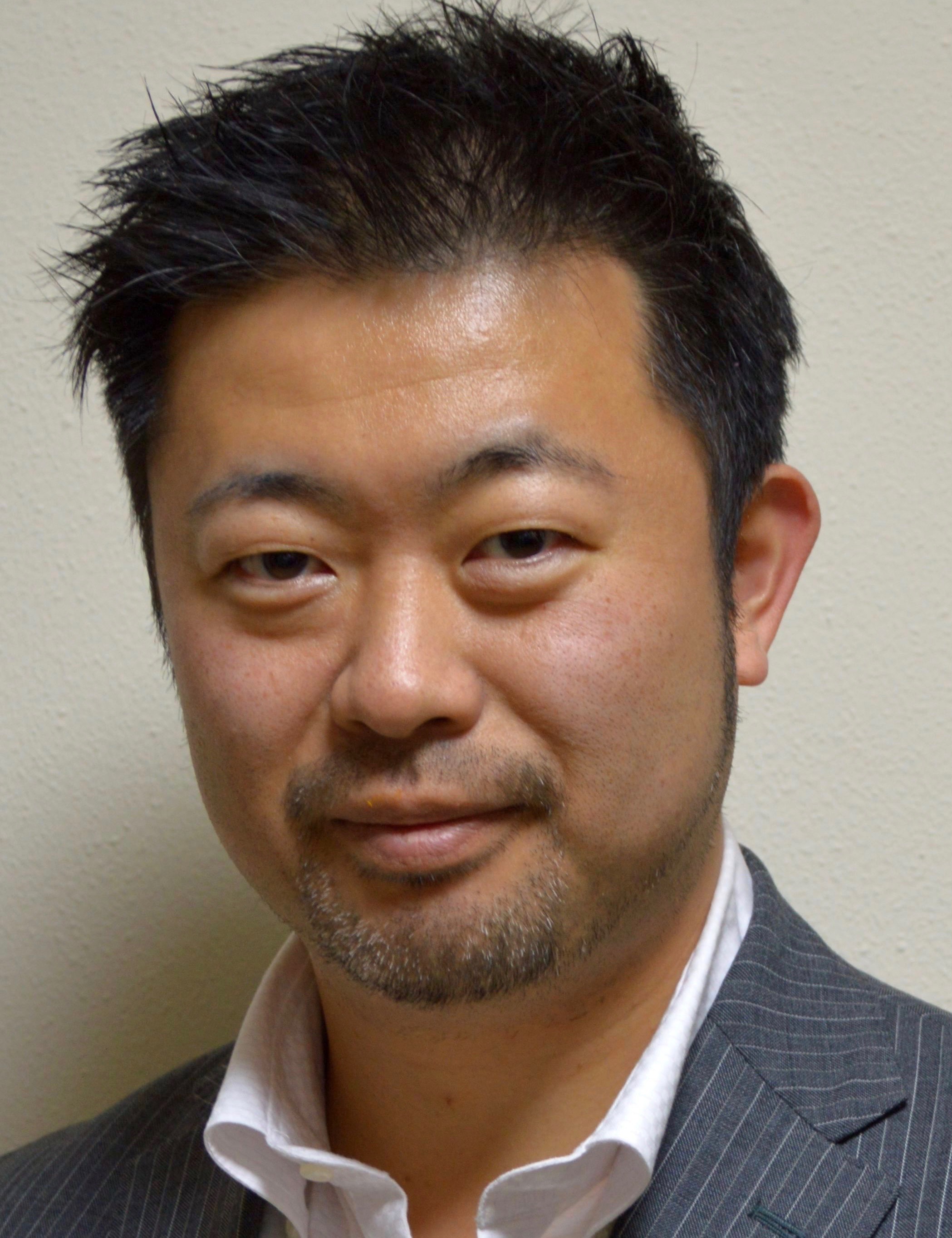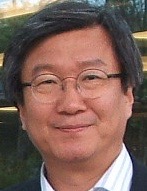08:00 | Morning Coffee, Tea and Networking |
|
Session Title: Microfluidics in Organs-on-Chips, Single Cell and Single Molecule Analysis |
| |
08:30 |  | Keynote Presentation Screening a Pair of Aptamers using GO-SELEX for Nanobiosensors and Lateral Flow Assays
Man Bock Gu, Professor & Chair, Department of Biotechnology, Korea University; Director, BK21 PLUS for Biotechnology, Korea South
Aptamers are single-stranded nucleic acids having molecular recognition properties similar to antibodies, and isolated by in vitro selection and amplification process, SELEX. This talk will start with how the aptamers are innovatively screened, for the first time in the world, by using a new nano-material, graphene, without the immobilization of targets and how a few aptamer duos, inevitable for being applied in a sandwich-type platform, a reliable platform for commercialization eventually, were successfully develpoed for different pandemic influenza viruses, from graphene oxide-based immobilization-free screening (GO-SELEX). In addition, some examples obtained from the interactions among aptamers, nanoparticles, and targets will be shown for a single or flexible aptamers with their successful implementation to the aptasensors. In addition, the benefits of using nano-sized materials for biosensing applications including lateral flow and SPR assays will be presented with scientifically proven clear examples of different organic-inorganic hybrid forms of nanomaterials and aptamers. |
|
09:00 |  | Keynote Presentation Providing Vascular Perfusion to Organ-on-Chip Disease Models
Roger Kamm, Cecil and Ida Green Distinguished Professor of Biological and Mechanical Engineering, Massachusetts Institute of Technology (MIT), United States of America
|
|
09:30 |  | Keynote Presentation Extreme Imaging For Large-Scale Single Cell Analysis
Keisuke Goda, Professor of Chemistry, University of Tokyo and Adjunct Professor, Wuhan University, Japan
Cellular heterogeneity is a central challenge of biology and medicine in which there are cell-to-cell differences even within the same species. Population-averaged measurements of cellular behaviors do not represent the behaviors of any individual cell. A few notable examples of cellular heterogeneity are the resistance of cancer cells to anticancer drugs and the metabolic heterogeneity of microorganisms. In this talk, I present extremely fast molecular imaging technology combined with artificial intelligence on a microfluidic platform for large-scale single-cell analysis. The technology enables the acquisition of information-rich molecular images of numerous single cells in a short period of time to address and exploit cellular heterogeneity for precision medicine and green energy. |
|
10:00 | Morning Coffee, Tea and Networking in the Exhibit Hall |
10:30 | Flexible Microfluidic Control for Highly Functionalized LOAC Platform
Masahiro Motosuke, Professor, Department of Mechanical Engineering, Tokyo University of Science, Japan
In this talk, I would like to introduce some our recent work in the development of sophisticated microfluidic control by using external-field for on-demand functionality in LOAC platform. |
11:00 | Development of PQQ-Glucose Dehydrogenase(GDH)-based Biosensors
Zhong Guo, Research Officer, Institute for Molecular Bioscience, The University of Queensland, Australia
Recently, biosensors have become a practical alternative to complex and expensive analytical instruments used in healthcare, agriculture and environmental monitoring. Among several currently used detection technologies such as optical, acoustic and piezoelectric, electrochemical sensors feature prominently due to their simplicity, specificity and high performance. Electrochemical blood glucose sensors are the most commercially successful biosensors accounting for 60% of global biosensor market. The sensors are based on amperometric monitoring of glucose oxidation by recombinant glucose dehydrogenase (GDH). We have developed biosensors by engineering of GDH through insertion and splitting strategies. The sensors can be adopted for the detection of Calcium ion, immunosuppressant drugs, salivary a-amylase protein or protease activity of thrombin and Factor Xa. We expect that the sensor architectures could be expanded to the detection of other biochemical activities, posttranslational modifications, nucleic acids and inorganic molecules. And we also expected the sensors can be used for the developing of Point-of Care diagnostics. Particularly, clinic testing of our first Point-of-Care device developed for Calcium detection for human blood, saliva and urine samples have been proceeded recently. |
11:30 | Induction of Stem Cell Self-Assembly by Adhesion Restriction
Kennedy Okeyo, Senior Lecturer, Institute for Frontier Life and Medical Sciences, Kyoto University, Japan
We have recently developed a novel culture technique, namely, the shoji technique, which involves the use of micro-structured large porous meshes as substrates for cell culture and growth in a suspension under restricted adhesion condition. This talk will highlight our on-going work on stem cell culture by the shoji technique, specifically, how this results in induction of self-assembly organization and, ultimately, differentiation. We show that the latter occurs mechanically and results in dynamic morphogenetic transformations that yields unique 3D cysts from originally 2D stem cell sheets. Overall, we show that the shoji technique presents a novel approach to modulate the cell culture microenvironment, resulting in mechanical induction of directed stem cell differentiation. |
12:00 | PERSONAL PHOTOMETER “PHOTOPETTE” WITH “LAB-IN-A-TIP” TECHNOLOGY FOR LIFE-SCIENCE APPLICATIONS
Dieter Trau, Associate Professor, University of Singapore, Singapore
Here, we introduce two novel concepts, a personal photometer “PHOTOPETTE” combined with “Lab-in-a-Tip” technology. The “Lab-in-a-Tip” is based on colorimetric reactions of an analyte with a reagent incorporated into a disposable polymer tip. The “PHOTOPETTE” is used for optical read out. Less sample volume required and on-spot detection are the advantages of this technology. We demonstrated pH and protein measurements in our “Lab-in-a-Tip design”. The work was conducted in collaboration with Tip Biosystems Pte Ltd. (This work is supported by National Research Foundation Singapore, NRF2014NRF-POC002-045). |
12:30 | Networking Lunch in the Exhibit Hall -- Meet the Exhibitors and View Posters |
|
Session Title: Biosensors |
| |
13:45 |  | Keynote Presentation Electrochemiluminescent Sensors for Selective Detection of Biologically Important Analytes
Jong-In Hong, Professor, Department of Chemistry, Seoul National University, Korea South
A discussion regarding chemo-dosimetric and supramolecular approaches to selective detection of biologically important analytes for point-of-care (POC) detection. |
|
14:15 | Microfluidic Cell Culture Devices to Control Gaseous Microenvironments in vitro
Yi Chung Tung, Associate Research Fellow,Research Center for Applied Sciences, Academia Sinica, Taiwan
Introduction of microfluidic devices capable of controlling various gaseous concentrations and gradients for in vitro cell culture developed in my laboratory. |
14:45 | Binding Kinetic Constants Measurement by Using Fiber Optic Particle Plasmon Resonance Biosensor
Shau-Chun Wang, Professor and Director, Department of Chemistry and Biochemistry and the Center for Nano BioDetection, National Chung Cheng University, Taiwan
Biosensing methods have been a popular means to measure the binding affinity and rate constants of immuno-logical reactions. In particular, the quantitative investigation of binding kinetics provides important information regarding the interactions between the docking target molecule and the counterpart probe molecule. Fiber optic particle plasmon resonance (FOPPR) biosensor, one simple and label-free sensing platform, has been successfully used to determine binding kinetic constants. The FOPPR biosensor is based on an optical fiber modified on gold nanoparticles, where the surface of gold nanoparticles has been conjugated by a mixed self-assembled monolayer (SAM) and a molecular probe reporter to dock with the corresponding analyte species. The binding process is recorded in static mode when analyte solution is loaded in one static sensing cell. The ability to analyse biomolecules without flow may be especially useful when an experiment only has a small amount of analyte available to characterize a biomolecular interaction. We compare FOPPR biosensor with commercialized Biacore 3000 SPR biosensor to determine the binding kinetic constants, which is limited by analyte injection flow rate and the probe concentration on the chip in Biacore 3000 SPR biosensor whereas FOPPR is not affected by these two effects. In addition, we established the general mathematical model to estimate the binding kinetic rate constants based on the pseudo-first-order model. We will discuss the agreement of obtained association rate constants (ka) and dissociation rate constants (kd) of anti-ovalbumin with ovalbumin and IgG binding with anti-IgG, between the computational results using our mathematical model, and the measured values. |
15:15 | Direct Observation of Folding Stability of Individual Chromosomes Isolated From Single Mammalian Cells in a Microfluidic Channel
Hidehiro Oana, Associate Professor, The University of Tokyo, Japan
Chromosomes were isolated from single mammalian cells in a microfluidic channel. Then, the isolated chromosomes were tethered at microstructures and exposed to high-salt solution in the channel. As a result, the chromosomes were unfolded non-uniformly, which can provide insights into epigenetic mechanisms. |
15:45 | Highly-Sensitive Label-Free Optical Biosensors and Multiplex Immuno-Magnetic Platform for Point-of-Care Diagnostics
Petr Nikitin, Professor and Head of Laboratory, Prokhorov General Physics Institute, Russian Academy of Sciences, Russian Federation
Several types of original biosensors will be presented. Intelligent biosensing systems are developed based on nanoparticles that can employ molecular interactions to perform any Boolean logic function. These systems are efficiently used for logic-gated biosensing with lateral flow test-strips and 3D filters. Besides, multichannel label-free biosensors are designed based on the spectral correlation interferometry (SCI) for detection of various analytes by measuring changes in thickness of a biolayer on functionalized glass slips used as affordable single-use sensor chips. The SCI method is not sensitive to bulk refractive index of a solution under test and provides signals in metrological units (pm or nm). Using real-time monitoring of bioreactions by the SCI, a new multiplex dry-reagent immunomagnetic (DRIM) biosensing platform is developed for rapid high-precision quantitative analyses of complex mediums. It is based on the highly sensitive magnetic particle quantification (MPQ) method that provides detection limit of 60 zeptomoles or 0.4 ng of magnetic nanolabels and extremely wide linear dynamic range of 7 orders. The DRIM platform has permitted the detection in human serum of as low as 25 pg/ml total prostate specific antigen during 30-min assay. The featured 3-fold signal increase per every order of concentration within 3.5 orders of magnitude allows precise analysis of antigen concentrations in a wide range. In addition, based on the MPQ technique, a new cytometry method has been developed and successfully tested for rapid assessment of cancer HER2/neu status of cells, for estimation of expression level of various antigens on cell surfaces and cancer diagnostics. |
16:15 | Single Cell Clinical Enzyme Analysis for Precision Medicine by Using Continuous Flow Microfluidics
Chia Hung Chen, Assistant Professor, National University of Singapore, Singapore
Precision medicine refers to giving the right therapeutics, to the right patient, at the right time. In the context of cancer, successful implementation of precision medicine, requires treatment individualization not only taking into account patient and tumor factors, but also tumor heterogeneity and tumor evolution over time. In this study, a continuous flow microfluidic device was developed as a functional flow cytometer (Droplet FACS) to detect secreted multiplexed protease activities at single cell resolution. The individual cells from patient samples are encapsulated within water-in-oil droplets for single cell multiplexed protease assay. We modified FRET (fluorescence resonance energy transfer)-based substrates to accommodate different fluorescent pairs with distinct excitation and emission wavelengths to obtain multiple signals from droplets containing single cells. Four substrate-protease reactions in a droplet were simultaneously monitored at three distinct pairs of fluorescent excitation (UV: 400nm, B: 470nm, G: 546nm, R: 635nm) and emission (B: 520nm, G: 580nm, R: 670nm) wavelengths. To infer a quantitative profile of multiple proteolytic activities from single cells, we applied the computational method Proteolytic Activity Matrix Analysis (PrAMA). The capability to determine multiple protease activities at single cell resolution has the potential to characterize tumor progress of individual patients. |
16:45 | Saving Lives With Brownian Motion
Han-Sheng Oswald Chuang, Associate Professor, Department of Biomedical Engineering, National Cheng Kung University, Taiwan
Sepsis is a fatal infectious disease claiming thousands of lives every year. Antimicrobial susceptibility testing (AST) plays a pivotal role in the success of treatments. However, the turnaround time for the outcome of conventional AST usually requires over 24 hours, resulting in high patient mortality. Moreover, antibiotics abuse can also incubate the booming of superbugs. A reliable and efficient drug screen becomes increasingly important to date to save lives in a timely fashion. To this end, a technique combining optical diffusometry and bead-based immunoassays is developed herein to achieve a rapid quantification of target microorganisms. The limit of detection of the method could achieve 100 CFU/mL. This study provides valuable information to timely treatments against poly-microbial diseases in the near future. |
17:15 | Microfluidics-assisted Spinning of Single Micrometer-sized Protein Microfibers Using Alginate as Sacrificial Matrix
Hisataka Hiramatsu, Graduate Student, Chiba University, Japan
We propose a facile and versatile approach to fabricate proteins microfibers using a microfluidic spinning system and sacrificial matrices of alginate. We prepared single micrometer-width gelatin and albumin fibers and applied them as solid scaffolds for 3D mammalian cell cultivation. |
17:30 | Close of Day 2 of the Conference |








